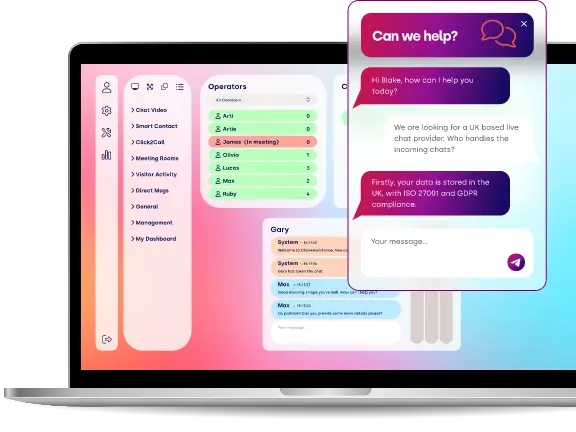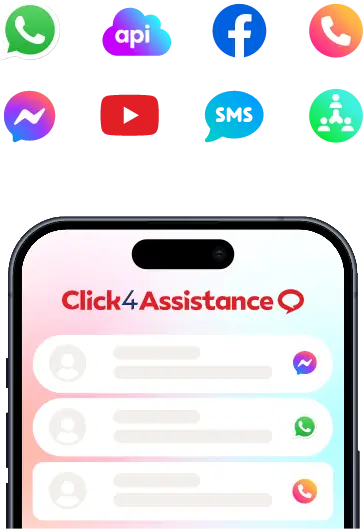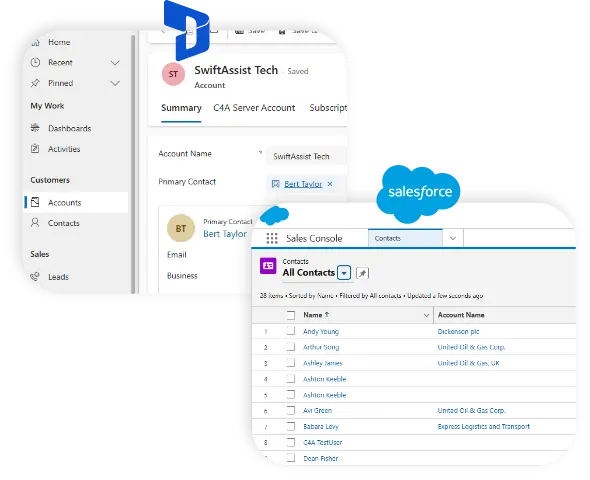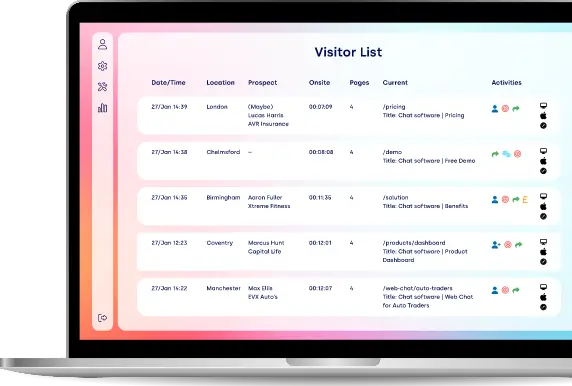Create a Chatbot for Customer Service and Support in 2025
Creating a chatbot for customer service and support boosts efficiency, cuts response times, boosts customer satisfaction, and provides a flexible way to handle repetitiveness across digital platforms.

In the fast-changing world of digital customer service, UK businesses are consistently looking for ways to automate their support channels without the steep learning curve or high costs associated with advanced AI customer service software. Although advanced AI chatbots that use natural language processing and machine learning are impressive, they often require significant investment, technical expertise and ongoing maintenance. For many small to medium sized businesses (SMEs) and organisations with limited resources, a more practical and user-friendly option is to create a chatbot for customer service and support using simple, rule-based, no-code platforms.
Rule-based chatbots work by following established scripts and decision trees. Unlike AI driven bots that attempt to understand complex, open-ended conversations, these chatbots reply on specific triggers and pre-programmed responses to guide the conversation. This simplicity makes them very user-friendly; businesses can set them up without any coding knowledge or the need to hire expensive developers. Once in place, they can handle repetitive and common questions such as opening hours, return policies, or appointment bookings. This allows human agents to focus on the more complex tasks and reduce customer wait times and frustration.
If you want to simplify routine customer queries, boost response times and overall satisfaction without the hassle of managing complex AI systems, then looking into rule based chatbot solutions is a great place to start. These platforms usually have user friendly drag and drop interfaces, predesigned templates for common industries and smooth integration with popular website builders and customer service tools. So, you can have a working customer service chatbot up and running in hours or days, not weeks or months.
UK businesses can find many reliable providers that specialise in easy-to-use chatbot tools that are designed for quick implementation and quick results. If you want to build a chatbot for your website, social media or messaging apps then these options allow you to provide 24/7 customer support, collect important user data and maintain communication without requiring technical skills. This guide will walk you through the steps to set up your first rule based chatbot, best practices and help you choose the right platform for your business and budget.
What is a Rule Based Chatbot and How Does it Support Customer Service?
A rule based chatbot follows a set of pre-defined rules or decision trees. It’s like an automated FAQ that guides customers through options via buttons, keywords or simple inputs and responds based on matched triggers.
How it Works:
- Customer select options or ask questions
- Chatbot matches keywords or buttons to rules you’ve set
- It delivers scripted responses or prompts to guide the conversation
- If chatbot cannot answer, it hands over to a human agent.
Since there is no AI or machine learning, rule based chatbots offer reliable and predictable responses for simple customer service tasks such as:
- Answering common FAQs
- Providing opening hours and contact info
- Helping with booking or order status queries
- Collecting customer details before human follow up
According to industry experts, many organisations still prefer rule-based chatbots for their quick setup and dependable user experience, especially when it comes to handling a high volume of standard customer enquiries.
As JotForm explains, rule-based bots are effective in “streamlining routine interactions and providing fast, reliable support without the complexity of AI.”
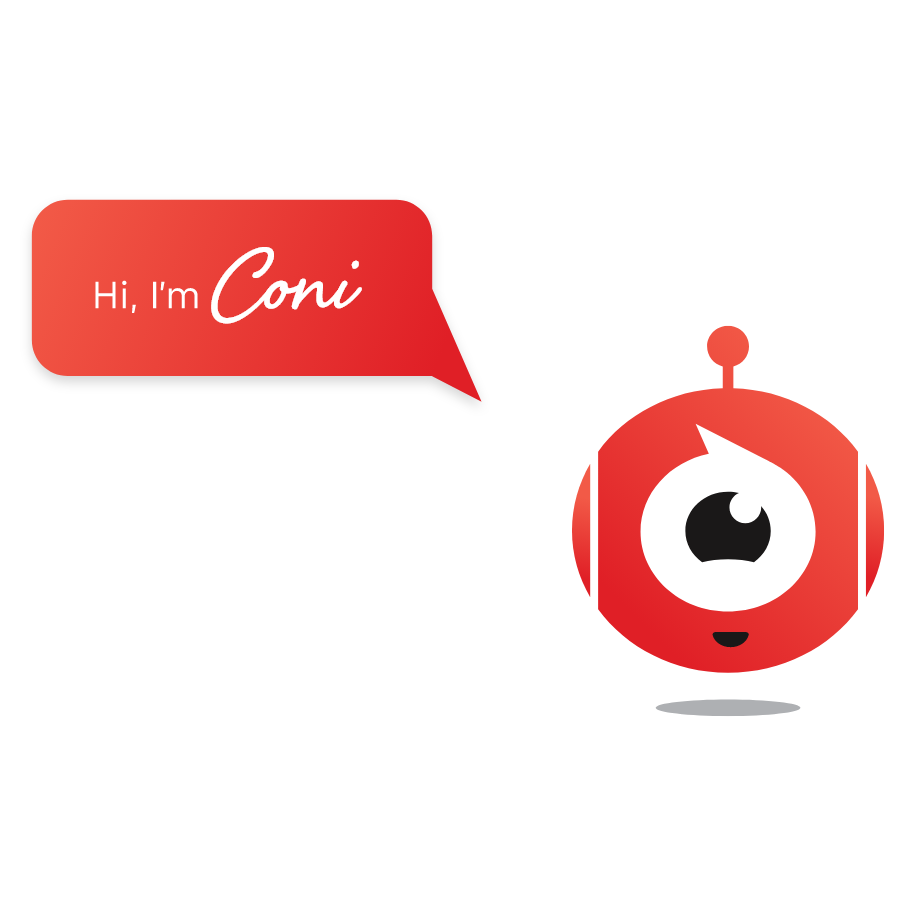
See Coni the Chatbot in Action for Automotive Industries
From automotive to finance and education, our industry-tailored chatbots are designed to meet your specific needs. Discover how chatbots can enhance engagement and streamline customer experiences.
Why UK Businesses Should Create Rule Based Chatbots for Customer Service?
1. No Coding Required
One of the biggest advantages of rule based chatbots is how easy they are to set up. Most no-code or low-code chatbot platforms have user-friendly drag and drop interfaces so UK businesses, regardless of their technical skills, can create workflows to match their customer service needs. No need to hire expensive developers or AI experts. With options to configure questions, answers and decision trees, even small business owners or customer service managers can create and edit chatbots themselves. This ease of use means businesses across all sectors, from retail to professional services, can get up and running and manage their support automation quickly.
2. Fast Deployment
Rule-based chatbots can be up and running in days not months. UK businesses can deploy these bots on their website, mobile app or popular social media platforms like WhatsApp and Facebook Messenger which are used by millions in the UK. This means businesses can adapt to changing customer needs or seasonal spikes without long IT projects. For example, a local retailer gearing up for a holiday rush or a utility company dealing with increased queries during outages can turn on chatbot support in an instant, improving customer satisfaction and operational efficiency.
3. Cost Effective Customer Support Automation
For many small and medium sized businesses (SMEs) in the UK, budget constraints are a barrier to scaling customer service. Rule-based chatbots are a cost-effective solution by managing repetitive, frequently asked questions like store hours, delivery tracking or return policies—questions that would otherwise take up valuable human resource. Automating these interactions reduces the need for big call centres and significantly reduces operational costs. So, businesses can redirect resources to more complex tasks while providing 24/7 customer support—a key differentiator in today’s market.
4. Consistent and Controlled Customer Experience
In the UK, companies have to follow strict regulatory guidelines around data protection (like GDPR) and customer comms. Rule based chatbots ensure all answers are pre-written and thoroughly reviewed so businesses can maintain consistent messaging and compliance. This reduces the risk of misinformation or unsuitable responses that can harm the brand or result in regulatory fines. By defining the tone and language of the chatbot companies can also reinforce their brand identity – whether that’s formal, friendly or professional – across all customer interactions.
5. Ideal for Handling High Volume of Simple Queries
UK businesses get varying levels of demand, especially during holidays, sales or outside of office hours. Rule based chatbots are great at handling large volumes of simple queries without compromising on service. They answer common questions like order status or appointment scheduling immediately so human agents can focus on complex or sensitive issues. This reduces customer frustration from long wait times and support backlogs so when customers do get through to a live agent they get quicker and more attentive service.
Key Benefits of Rule Based Chatbots for Customer Support
- Predefined Templates
Most no-code platforms have pre-built chatbot templates for customer service scenarios – like FAQs, order tracking, appointment scheduling or returns. These templates speed up the bot development process and ensure best practice. UK companies can use these to get bots up and running fast to tackle common customer issues, increase first contact resolution and overall satisfaction.
- Button & Keyword Triggers
Rule-based chatbots rely on structured inputs to guide users. Buttons present clickable options to navigate through FAQs or services, reduce typing mistakes and speed up resolution. Keyword triggers allow the bot to recognise specific words or phrases entered by the customer and respond with the pre-defined answer or action. Together these features make conversations smoother and reduce user frustration.
- Human Handoff
Although rule-based bots handle simple queries well, complex or sensitive issues need human involvement. The human handover feature allows for a seamless transfer from the chatbot to a live customer service representative without losing the context of the conversation.
- GDPR Compliance
Privacy is top of the agenda in the UK, regulated by GDPR and other laws. No-code chatbot platforms for the UK market like Click4Assistance have compliance features like consent prompts, secure data storage and options for users to access or erase their data. Ensuring chatbot interactions comply with these regulations protects businesses from legal liabilities and builds customer trust.
- Custom Branding
A chatbot should be an extension of your brand. Custom branding features allow you to customise the chatbot’s visual elements – colours, fonts, logos and welcome messages – to match your brand guidelines.
Step-by-Step Guide for Creating a Chatbot for Customer Service
Step 1: Identify Repetitive Customer Queries
Review you existing customer support records, whether they’re from tickets, phone calls, live chat logs or emails – to find out what questions are being asked most frequently. Typical questions are around delivery times, returns/exchange policies, store hours or product stock. This helps your chatbot focus on the most important areas, reducing the workload for agents and increasing customer satisfaction.
Step 2: Choose a No-Code Chatbot Solution
Pick a platform that has a drag and drop flow design, rule-based decision trees and support across multiple channels. Give priority to platforms that are GDPR compliant and hosted in the UK or EU to ensure legal compliance and data security. For example, Click4Assistance is designed for UK businesses. Other considerations are the ability to integrate with your website, CRM or popular messaging apps used by your target audience. Use free trials or demos to test usability and features before committing.
Step 3: Build Conversation Flows with Visual Tools
Use the platform’s drag and drop editor to build conversation flows. Frame each step as a simple question or prompt with set responses through buttons or keyword triggers. Make sure the flow feels intuitive and anticipates different user inputs or potential misunderstandings. Keep language clear and in line with your brand voice. Add quick access options like “Main Menu” or “Talk to Agent” to help navigation. For UK users include localised terms or references to build trust and familiarity.
Step 4: Handover to Human Support
Set up clear criteria for when the chatbot should hand over to a human agent. This could be after a certain number of failed responses, the detection of certain keywords like “complaint” or “refund” or on customer request. By integrating with your existing live chat or helpdesk software you can ensure a seamless handover and keep the conversation history so agents don’t have to ask the same questions again. Human fallback is good for complex or sensitive topics that the chatbot can’t handle.
Step 5: Test Thoroughly Before Launch
Before you go live, test internally to make sure all conversation paths work as expected. Get team members from different departments to role play different scenarios and find any gaps or confusing sequences. If possible, do a beta test with a small group of real customers to get feedback on usability and clarity. Make sure GDPR compliance – ensure any personal data collected is managed correctly and privacy notices or consent prompts are shown.
Step 6: Launch on Your Website or Channels
Once tested, place the chatbot widget on high traffic areas of your website, such as the homepage, support or checkout pages. Deploy multi-channel on platforms like Facebook Messenger or WhatsApp to reach customers in their preferred communication channels. Make sure the chatbot is visible and accessible but not intrusive. Tell customers what the chatbot can do – e.g. “Chat with us 24/7 for instant answers.”
Step 7: Regular Monitoring and Updates
Make the most of the analytics dashboard built into your chatbot to track conversation volumes, common questions, and moments when users might lose interest. Keep an eye on performance trends and customer satisfaction indicators to identify areas that could use some improvement. Regularly update your chatbot scripts to reflect any changes in products, services, policies, or seasonal promotions. By making these ongoing adjustments, you ensure that your chatbot remains effective, relevant, and aligned with the evolving needs of your customers and any regulatory requirements.
How Do Rule Based Chatbots Enhance Customer Experience?
- Instant Answers
Rule-based chatbots give instant answers to common customer questions, so you don’t have to make customers wait. Whether it’s about delivery or store hours, customers get the answer they need right away – and are more satisfied and less likely to drop off.
- 24/7 Support
With chatbots your business is open 24/7. Even outside of office hours customers can get help instantly, which is especially important for UK customers who are in different time zones or have hectic schedules.
- Minimising Frustration with Clear Navigation
By providing pre-defined buttons and guided options, rule-based chatbots simplify the customer journey. Users can quickly select relevant topics or requests without having to guess how to ask their question, resulting in smoother and less frustrating interactions.
- Reliable and Consistent Information
Chatbots give answers that are carefully crafted and approved by your team, so customers get the same trustworthy, compliant information every time. This builds trust and your brand’s professionalism.
- Let Human Agents Tackle Complex Queries
By automating routine and repetitive questions, chatbots allow your customer service agents to focus on more complex, sensitive or personal issues. This utilises your support resources and improves overall service quality.
Shep Hyken, customer service expert says
“The best customer service doesn’t just meet expectations – it anticipates them. Chatbots help by providing fast, accurate responses instantly, freeing human agents to create exceptional experiences where it matters most.”
Examples of UK Businesses Using Rule Based Chatbots
- Retailers Managing Stock and Returns
Several UK retail brands have implemented rule-based chatbots to answer common customer queries like stock availability, delivery times and returns. This automates the wait times and increases customer satisfaction and allows human agents to focus on more complex questions. For example, fashion retailers and electronics shops use chatbots to handle peak times like Black Friday.
- Healthcare Booking Appointments
General practitioners and dental surgeries across the UK are using rule-based chatbots to manage appointment booking and cancellations. By automating these standard interactions, healthcare providers can reduce phone traffic, booking errors and patient inconvenience – especially out of hours.
- Travel Agencies Instant Bookings
Travel agencies and tour operators in the UK are using chatbots to deliver instant information on booking confirmations, itinerary changes and travel alerts. This means travellers can stay up to date without having to wait on the phone lines, which is especially helpful during busy holiday periods or unexpected disruptions.
- Local Authorities Citizen Queries
Local councils are using rule-based chatbots to answer frequently asked questions about council tax, bin collections, parking permits and more. This digital self-service approach reduces the burden on call centres and increases information availability for residents, in line with the UK public sector’s digital transformation goals.
A survey conducted in 2023 found that 65% of UK businesses using rule-based chatbots saw a significant drop in call volumes within just the first three months of using them. This highlights the impressive benefits in both operational efficiency and customer service that UK businesses can gain by adopting chatbot technology.
Why Choose Click4Assistance to Create Your Rule Based Chatbot?
Click4Assistance is a UK based company that specialise in simple, rule-based chatbot solutions for customer service teams – no coding required. Here’s why businesses in the UK choose us:
- User Friendly Drag-and-Drop Interface
Our visual chatbot builder is easy to use and allows you to create, customise and modify conversational flows in minutes. This means your team can set up automated customer interactions without needing developers or technical expertise.
- GDPR Compliant Hosting and Data Protection
We take data privacy very seriously and host all customer interactions in the UK so you can be sure your customers’ personal data is protected by UK law.
- Smooth Integration with Existing Tools
The platform integrates with popular customer service software, CRM systems and communication channels so your chatbot doesn’t disrupt your existing workflows.
- Dedicated UK Based Support and Consultancy
With local expert support and consultancy services, UK businesses get bespoke advice, fast technical help and best practice guidance – making chatbot setup and management a breeze.
Click4Assistance’s focus on simplicity, compliance and local support makes us the perfect choice for UK businesses looking to improve customer service efficiency and satisfaction. Try us out and add a chatbot to your website today to start providing fast and consistent customer support.
Conclusion
If you’re a UK business starting your chatbot journey, rule-based, no-code chatbots are the simplest and most effective way to automate customer support. They reduce operational costs, speed up response times and increase customer satisfaction – all without the complexity or cost of advanced AI or specialist developers.
By following best practice and working with trusted UK based providers, you can get a chatbot built for your business in no time. Whether you want to manage frequent questions, simplify appointment booking or offer 24/7 support, rule-based chatbots are a simple, scalable solution to improve your customer experience today. Start with simplicity, start with intelligence and get chatbot technology that works for you.
See Click4Assistance in Action
Schedule a demo with our experts and explore the power of live chat and AI-driven engagement tools tailored to your business.

